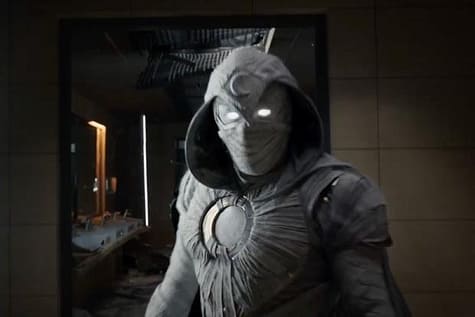What is it? Baahubali and Bollywood
From Issue 9

Baahubali is a series truly epic in its scale of action, worldbuilding, and romance. Directed by S. S. Rajamouli, the Baahubali series is made of two films, Baahubali: The Beginning, and Baahubali 2: The Conclusion. What gets me into the movies is the worldbuilding, the Kingdom of Mahishmati is full of wild beasts, bandits, spectacular temples and palaces, flying boats, and massive armies. Conflict in the movie stems from the evil Bhallaladeva, the tyrant of Mahishmati, who attempts to crush a rebellion led by Mahendra Baahubali, a man of tremendous athleticism and a noble heart, with the support of exiles and political prisoners. The movie begins with a hardcore scene that sets the tone for the rest of the series that immediately had me hooked.
It opens with an injured woman holding a baby in a river, wading through with a panicked look on her face. Two armed guards come after her and she dispatches them fairly easily despite her predicament, but she gets swept into deeper water after falling in. With her last breath she looks to the top of the mountain and promises the gods that the child will live, holding him above the water with one hand as she sinks below. I’m going to do my best not spoil the movie for you because it is something you have to experience yourself.
Kattappa would be my favorite character throughout the films, because of the emotional complexity of his character, because he is often torn between his duty as a servant-at-arms to the kingdom of Mahishmati and his loyalty to Armarendra Baahubali and his family. He is wise because of his age, and takes the role of mentor to Baahubali. One scene with him in it that I thought was really funny is where Baahubali describes love as being like two doves, Kaattappa misses the simile and imagines that they would taste wonderful if roasted with herbs and spices.
The action in these films are over the top, with martial arts, grandiose siege warfare, sword duels, mechanical contraptions, and wild beasts all appearing in some combination one way or another. When characters jump they soar, when the punch they crush stones. The fights are entertaining to watch because the choreography and special effects make it superhuman to the point of implausibility. The CGI is surprisingly good, and the movie looks like Avatar if it took place in a fantasy world instead of a science fiction one.
My only complaint about Baahubali movies is that they are colorist. What I mean by that is the lighter skinned characters make up the majority of the upper class, and are portrayed as attractive during the musical numbers. Darker skinned people are seen as poor, dirty, or even as barbarians in the case of the Kalakeyians, while the light skinned are seen as wealthy and powerful warriors.
Bollywood is a term used to describe the Indian movie industry, and is formed by combining the words Bombay and Hollywood. Bollywood makes up a large percentage of the movie industry in India, with large ticket sales too, selling billions of them each year. The masala film is the most popular type of film produced in Bollywood, masala is the name for a blend of spices, so films under this genre like Baahubali combine elements from action, romance, comedy, and drama. Influences on Bollywood include Hollywood musicals, east Asian martial arts films, and long histories of cultural theatre. “Cinema actually has been the most vibrant medium for telling India its own story, the story of its struggle for independence, its constant struggle to achieve national integration and to emerge as a global presence” says author Megnad Desai. Usually portrayed as bumbling, corrupt, or over ritualistic by the outside world, Bollywood productions allow Indians to tell the world their stories and show their creativity.










